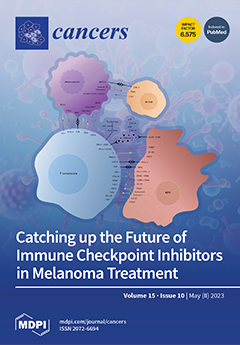Aim: EBV encodes at least 44 miRNAs involved in immune regulation and disease progression. Exosomes can be used as carriers of EBV-miRNA-BART intercellular transmission and affect the biological behavior of cells. We characterized exosomes and established a co-culture experiment of exosomes to explore the mechanism of miR-BART1-3p transmission through the exosome pathway and its influence on tumor cell proliferation and invasion. Materials and methods: Exosomes of EBV-positive and EBV-negative gastric cancer cells were characterized by transmission electron microscopy. NanoSight and Western blotting, and miRNA expression profiles in exosomes were sequenced with high throughput. Exosomes with high or low expression of miR-BART1-3p were co-cultured with AGS cells to study the effects on proliferation, invasion, and migration of gastric cancer cells. The target genes of EBV-miR-BART1-3p were screened and predicted by PITA, miRanda, RNAhybrid, virBase, and DIANA-TarBase v.8 databases, and the expression of the target genes after co-culture was detected by qPCR. Results: The exosomes secreted by EBV-positive and negative gastric cancer cells range in diameter from 30 nm to 150 nm and express the exosomal signature proteins CD9 and CD63. Small RNA sequencing showed that exosomes expressed some human miRNAs, among which hsa-miR-23b-3p, hsa-miR-320a-3p, and hsa-miR-4521 were highly expressed in AGS-exo; hsa-miR-21-5p, hsa-miR-148a-3p, and hsa-miR-7-5p were highly expressed in SNU-719-exo. All EBV miRNAs were expressed in SNU-719 cells and their exosomes, among which EBV-miR-BART1-5p, EBV-miR-BART22, and EBV-miR-BART16 were the highest in SNU-719 cells; EBV-miR-BART1-5p, EBV-miR-BART10-3p, and EBV-miR-BART16 were the highest in SNU-719-exo. After miR-BART1-3p silencing in gastric cancer cells, the proliferation, healing, migration, and invasion of tumor cells were significantly improved. Laser confocal microscopy showed that exosomes could carry miRNA into recipient cells. After co-culture with miR-BART1-3p silenced exosomes, the proliferation, healing, migration, and invasion of gastric cancer cells were significantly improved. The target gene of miR-BART1-3p was FAM168A, MACC1, CPEB3, ANKRD28, and USP37 after screening by a targeted database. CPEB3 was not expressed in all exosome co-cultured cells, while ANKRD28, USP37, MACC1, and FAM168A were all expressed to varying degrees. USP37 and MACC1 were down-regulated after up-regulation of miR-BART1-3p, which may be the key target genes for miR-BART1-3p to regulate the proliferation of gastric cancer cells through exosomes. Conclusions: miR-BART1-3p can affect the growth of tumor cells through the exosome pathway. The proliferation, healing, migration, and invasion of gastric cancer cells were significantly improved after co-culture with exosomes of miR-BART1-3p silenced expression. USP37 and MACC1 may be potential target genes of miR-BART1-3p in regulating cell proliferation.
Full article






